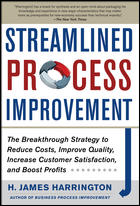
Nondestructive testing (NDT) is hardly a spring chicken. As observers point out, the various NDT methods are mature-fluorescent penetrant inspection, for example, was developed in the 19th century.
But while NDT includes many varied and time-tested methods, their use is underutilized. A gap persists between what NDT laboratories offer and how their clients use, or don't use, these services. Other gaps exist between domestic and foreign NDT quality standards, as well as within U.S. certification requirements and inspector training.
A handful of NDT laboratory leaders recently weighed in about the state of their industry and how they're attempting to bridge the many gaps confronting them.

What's not known can hurt
While NDT methods are robust and continue to evolve, the demand for them has not necessarily kept pace. Part of the problem is customers do not always see the need for NDT, particularly in general industry, says Kirk Thams, vice president of operations at XRI Testing, a division of X-Ray Industries Inc. (Troy, MI). It is less of an issue in the two other primary arenas that use NDT, aerospace and military. "The aerospace industry lives with 100% inspection on every component," says Thams, who is also past president of the Nondestructive Testing Management Association. "If it's on an airplane, it gets inspected." The military also incorporates more stringent inspection requirements. When a request for a quote goes out, the NDT requirements are clearly spelled out.
Not so for general industry. While there may be awareness of the need for inspection, the details are fuzzy. "It is not defined how they have to inspect it, what they are going to be looking for," says Thams. "A lot of times it [manufacturing specs] will call out an inspection method that won't even work on the material or manufacturing process."
That lack of understanding reflects a larger challenge facing NDT laboratories, says Mark Tierney, manager of NDT services at Laboratory Testing Inc. (Hatfield, PA). "We are seen, for lack of a better term, as a necessary evil or a stumbling block in the manufacturing cycle," he says. "Actually, some people look at NDT inspections as unnecessary or an inconvenience." In the back of their minds customers know that a missed defect could cause problems, he says, "but we're not at the forefront when they make up the list of things they need on the project."
In Tierney's view, "It's absolutely critical for customers to change those views and to use NDT to their advantage." But it won't be an easy task, in part, he says, because decisions are being driven by cost rather than quality. "NDT is always deemed outrageous or unaffordable," he says, "and much of the time it seems to be an afterthought."
The NDT industry is partly to blame for these attitudes, some say. "We haven't done a good job of being out there and explaining what the different methods are, and how they can assist the different manufacturing processes," Thams says. "I put a lot of the blame on our industry." Nor has the industry done a good job of keeping customers apprised of new developments in the field, such as enhancements to methods and applications to new materials. "All that needs to change," he says.

Make it perfect
Mike Forbes, sales and marketing manager of Non-Destructive Testing Group (Caledonia, MI), sees another area where NDT labs can improve their educational outreach. He notes a shift in companies trying to engineer out the need for NDT inspections by creating perfect engineering practices. With these clients, "We've taken the approach to work with them and help them target areas with feedback. For example, we see defects moving from one location to another as their process changes," says Forbes. It may sound like Forbes and his colleagues are trying to engineer themselves out of a job, but that is hardly the case, he says, given that in real-world manufacturing, it will never be possible to eliminate the need for NDT. "So this is good for our long-term working relationships," he says.
Thams sees a shift toward more 100% part inspections in the automotive industry, where manufacturers are placing more emphasis on product reliability as a way of offsetting the huge costs of recalls. Instead of simply doing a random sample, his lab becomes part of the process, becoming involved in full production runs. "In some cases we do inspections on components in every vehicle and 100% inspection on safety critical components," he says.
Competition from abroad
Randy Plis, vice president of business development at Metals Testing Co. (South Windsor, CT), suggests that domestic NDT may get a boost as manufacturers continue to look overseas for cheaper parts. In the case of the heavy equipment industry, "People are trying to bring in what is cheaper, replacing something that has worked just fine over the years, but then they are running into some difficulties," he says. NDT can help sort through the some of the unknowns of dealing with a new supplier in a different country. "The cost of NDT is pennies in comparison to the consequences of letting product through that has all sorts of defects in it."
It is a sticky matter, because there are NDT laboratories in Europe and Asia, where many of the materials are coming from. "They have their own methodology and specifications, and we have ours," says Tierney. "We can test the same materials and get very different results, in some instances. This is a result of not comparing apples to apples, so to speak. It can then get into a ‘whose right and whose wrong contest,' which is unfortunate."
Those differences are not always acceptable to U.S. manufacturers, which could open the door for domestic NDT labs. "You would hope so," says Tierney. "But unfortunately, NDT doesn't come into the spotlight until there is a major catastrophe."
According to Thams there is a huge gap in quality between domestic and offshore parts, but it's not always recognized by manufacturers using the parts from abroad. "They don't realize it until they have a problem," he says. "Then they have got a product that is assembled, it is in a finished product or it is in the pipeline, and all of a sudden it is a huge containment issue."
Data acquisition
Accurate data acquisition is quickly moving to the forefront of NDT, especially as NDT laboratories evolve from simply identifying a bad part to exploring the nuances of the defect. "We want to know what the size of the indication is, whether it is a relevant indication," says Forbes. "The technology is helping us to salvage parts."
Thams terms data acquisition and management one of the biggest hurdles that labs face. Aerospace documentation, for example, needs to be kept for 25 years. While that's not an issue for data maintained on X-ray film or on paper, it is a different matter for electronic images and data. "We are asking ourselves, ‘how am I going to retrieve that data in 24 years and 11 months if someone comes looking for it?' What's the software going to look like in 24 years?"

The challenge of composites
The move toward composites continues, says Plis, bringing with it a host of challenges for NDT labs. "There are so many variables involved in composites. It is not like metals, where you have got a very good baseline, and relatively few variables other than perhaps an alloy variation."
With composites, every part is unique and susceptible to defects that are easily hidden.
"Composite inspection is unique and interpretation can be extremely difficult," says Tierney. "Initial upfront costs can be astronomical for an in-house system, and training is quite extensive."
But it's certainly worth considering. "This is going to be big area of growth," says Plis.

Who's qualified?
Can an NDT laboratory be all things to all people? In the past, that may have been the case, but Forbes says this may be changing, driven in part by shifts in certification standards. "Labs are starting to specialize in one area of expertise, which may be due to the cost and enormity of the testing qualifications."
His company, however, is sticking with the broad-based approach. "We have compartmentalized the company, and each one of the departments specializes in a particular area." A separate quality department assesses each department to ensure testing qualifications and requirements are met for each specialized area. "It increases our overhead, but having a dedicated quality team helps us make sure we can qualify and provide the testing accordingly," he says.
Forbes sees another gap, this one generational. As technology evolves, knowledge has not always kept pace. Younger operators may be adept at working newer machines, but many lack an understanding of NDT principles. "And you cannot just rely on the machines, as good as they are, you have to understand what is going on, too," Forbes says. On the other hand, older operators, who have a strong grounding in the NDT basics, do not always trust the new equipment or even know how to operate it. "We need to educate both groups."
Personnel qualifications are an ongoing discussion. Tierney characterizes it as a political battle. "Who is going to control it, who is going to dictate it? Some want centralized certification; others do not. They say it is like airing your own dirty laundry." The latter view is not one that Tierney shares. "If I qualify the technicians in our lab, they should be competent enough to be qualified by anyone," he maintains. "I should not have any fear of anyone coming in and reviewing those qualifications, because they should be complete and up-to-date. And that can only strengthen our industry." NDT

